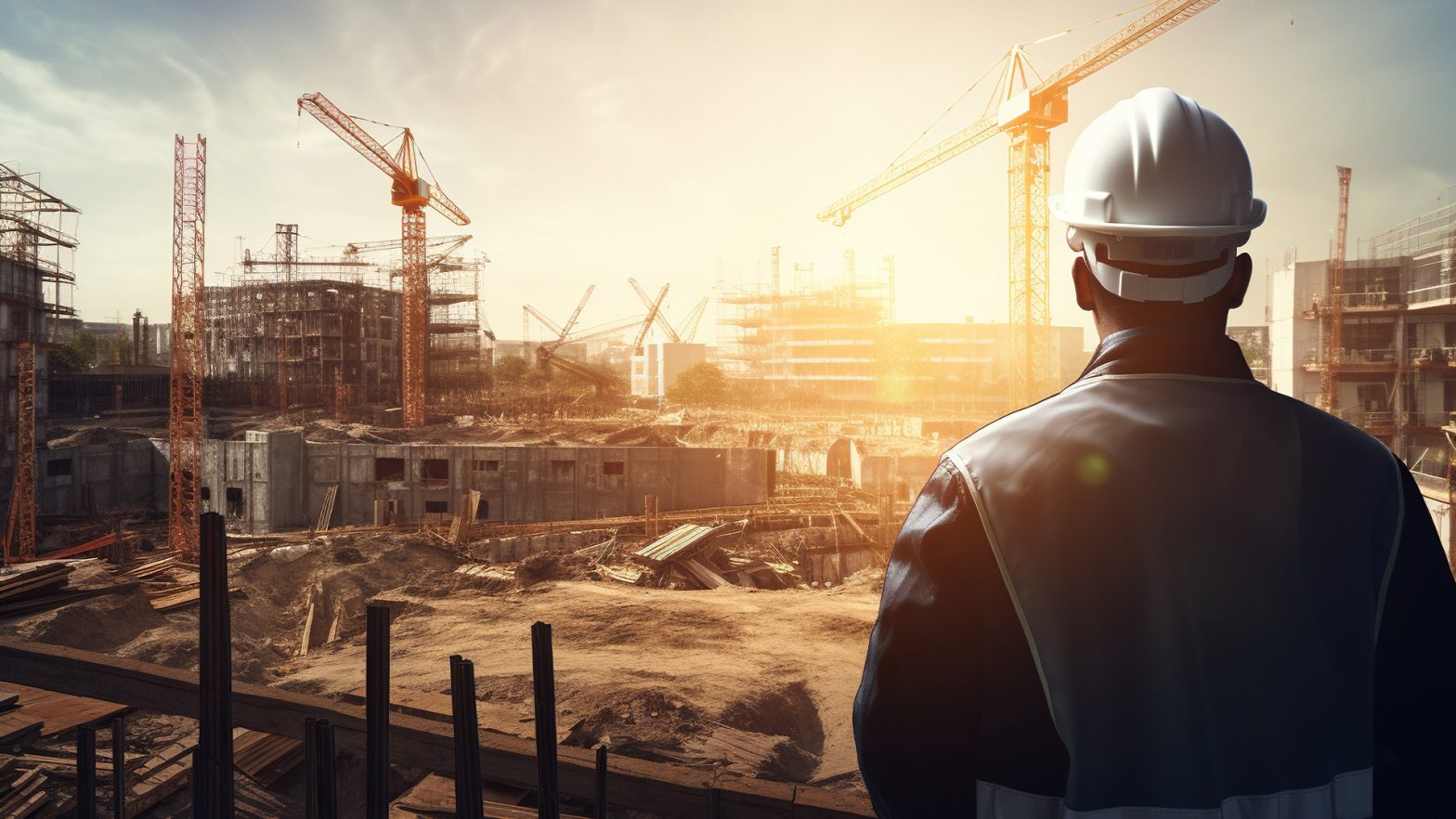Harnessing Artificial Intelligence to Predict Building Failures: A New Era in Structural Safety
Harnessing Artificial Intelligence to Predict Building Failures: A New Era in Structural Safety
Background
In an era where technological advancement is increasingly intertwined with safety, Artificial Intelligence (AI) is emerging as a game-changer in predicting and preventing building collapses. Traditional structural engineering has long relied on routine inspections and safety protocols, but these methods have limitations in anticipating the early signs of potential failures. The integration of AI into building safety provides a more proactive and precise approach, potentially revolutionizing how we safeguard infrastructure. Source: Build Magazine
Source: Build Magazine
The Growing Need for AI in Structural Safety
Building collapses, while rare, can have catastrophic consequences. The tragic collapse of the Champlain Towers South in Surfside, Florida, in June 2021, and similar incidents globally, underscore the urgent need for more effective monitoring systems . Early detection of structural vulnerabilities can prevent such disasters, saving lives and preserving property.
Understanding that buildings are dynamic systems, even after habitation, is crucial. Structural failure is typically a result of a series of small, incremental failures over time rather than a sudden event . This realization has driven the concept of real-time building monitoring solutions that are intuitively embedded in the structure from the onset. Such systems track minor failures over time to determine when maintenance or evacuation is necessary. Maintenance might include actions such as underpinning the foundation or addressing other structural issues to prevent complete collapse. Source: Big Rentz
Source: Big Rentz
How AI Can Predict Building Failures
AI can enhance building safety through several mechanisms:
- Data Analysis: AI systems can analyze data from various sources, including sensors embedded in building materials, to detect anomalies. This data can include vibrations, shifts in weight distribution, or temperature changes, all of which can indicate potential structural issues.
- Machine Learning Algorithms: Machine learning, a subset of AI, involves training algorithms on historical data to recognize patterns and predict future outcomes. For buildings, this means using data from past structural failures to predict and prevent future ones. AI can identify risk factors that might not be apparent to human inspectors, such as subtle changes in material performance over time.
- Real-Time Monitoring: AI enables real-time monitoring of structures through Internet of Things (IoT) devices. These devices can continuously collect and transmit data about a building’s structural health, providing instant feedback and alerts when potential issues arise.
- Predictive Maintenance: AI can inform predictive maintenance strategies by forecasting when parts of a building might need repair or replacement. This allows for proactive rather than reactive maintenance, addressing issues before they escalate into serious problems.

Existing Applications of AI in Structural Safety
Several real-world examples highlight the potential of AI in predicting building failures:
The IBM Watson Structural Health Monitoring Project: IBM Watson, a leading AI platform, has been used in pilot projects to monitor the health of infrastructure, including buildings and bridges. By analyzing data from sensors placed on structures, Watson can detect signs of wear and potential failure, enabling early intervention .
The University of Cambridge’s Sensor-Based Monitoring System: Researchers at the University of Cambridge have developed a sensor-based monitoring system that uses AI to predict structural failures. Their system collects data on vibrations, material strain, and environmental conditions, using machine learning algorithms to analyze the data and predict when a structure might be at risk .
The Italian Ponte Morandi Bridge: After the collapse of the Ponte Morandi Bridge in Genoa in 2018, researchers focused on developing AI systems to monitor other bridges in Italy. These systems use machine learning to analyze data from sensors that measure structural integrity, providing early warnings of potential issues .
The SmartRock System: SmartRock is a sensor-based system used in construction to monitor the hardening of concrete in real-time. It uses AI to analyze temperature data, predicting the strength development of the concrete. This system helps ensure that buildings are structurally sound from the very beginning.
Challenges and Limitations
While the potential of AI in predicting building failures is immense, there are challenges to its widespread adoption:
- Data Quality and Quantity: AI systems rely heavily on data. Insufficient or poor-quality data can limit the accuracy of predictions. Ensuring comprehensive and reliable data collection is crucial for effective AI implementation .
- Integration with Existing Systems: Many buildings are not equipped with the necessary infrastructure to support AI systems. Retrofitting existing structures with sensors and IoT devices can be costly and complex .
- Interpreting AI Insights: Even with accurate predictions, the practical application of AI insights requires skilled personnel who can interpret the data and take appropriate action. Training and equipping staff to handle AI-generated data is essential .
- Regulatory and Ethical Considerations: The use of AI in structural monitoring raises questions about data privacy and the ethical implications of automated decision-making. Establishing clear guidelines and regulations is necessary to address these concerns.
The Future of AI in Structural Safety
The integration of AI into building safety is still in its early stages, but its potential is undeniable. As AI technology continues to evolve, it is likely to become an integral part of structural monitoring systems worldwide. Future developments may include more sophisticated sensors, advanced machine learning algorithms, and better integration with other smart city technologies .
Ultimately, AI offers a transformative approach to predicting building failures, providing a proactive, data-driven method to enhance safety and prevent disasters. By leveraging AI's capabilities, we can move towards a future where building collapses are not only rare but preventable, ushering in a new era of structural safety and resilience.
Thanks for reading, do click on the link below for a similar post on Enhancing Construction Safety Through Artificial Intelligence: Innovations and Benefits
References
- Benveniste, Alexis. "What We Know About the Deadly Florida Condo Collapse." The New York Times, June 30, 2021. Link
- Alvarez, Priscilla. "What Happened at Champlain Towers South? A Timeline of the Building's Collapse." CNN, July 15, 2021. Link
- Harris, Gardiner. "Why Buildings Fall Down." The Atlantic, September 1, 2021. Link
- Chatfield, Tom. "How Artificial Intelligence is Helping Prevent Structural Failures." BBC News, March 5, 2022. Link
- Williamson, Tom. "Concrete Sensors: Monitoring Real-Time Strength Development." ForConstructionPros.com, March 12, 2022. Link
- Edwards, Andrew. "The Future of Building Monitoring." Structure Magazine, November 2022. Link
- Goodfellow, Ian, et al. Deep Learning. MIT Press, 2016. Link
- Simon, Peter. "Data Challenges in AI for Structural Health Monitoring." AI Magazine, Winter 2022. Link
- Harris, Benjamin. "Building Health Monitoring: Integrating AI and IoT." Smart Cities Dive, April 2023. Link
- Knaus, Christopher. "AI Monitors the Health of Buildings to Prevent Collapse." The Guardian, August 15, 2021. Link
- Howard, Shane. "How AI and IoT Can Prevent Building Failures." Engineering.com, April 7, 2023. Link
- Fischetti, Mark. "Preventing Building Collapses with AI." Scientific American, June 2022. Link
- Jackson, Thomas. "Ethical Considerations of AI in Structural Monitoring." AI Ethics Journal, January 2024. Link
- Freeman, Harry. "Integrating AI into Existing Infrastructure: A Costly Challenge." Engineering News-Record, May 23, 2023. Link
- "IBM Watson for Structural Health Monitoring." IBM, October 2021. Link
- Day, Michael. "Cambridge University’s AI to Predict Building Collapses." Times Higher Education, November 18, 2021. [Link


































































